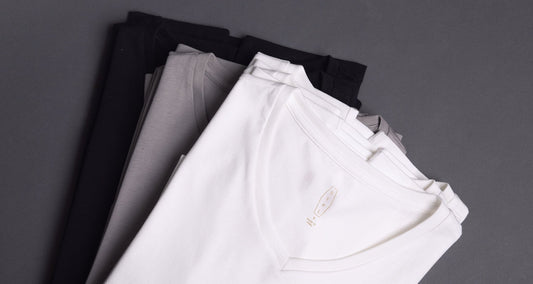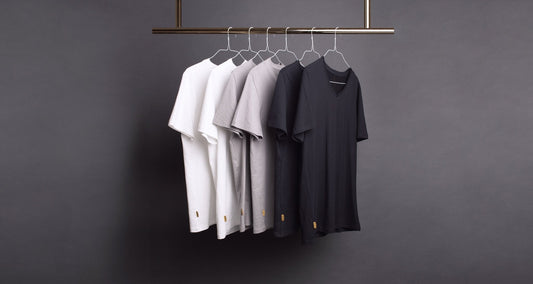A Slow Fashion Lifestyle
Share
We have all seen at least one example of a high street brand promoting their collection by using terms such as “eco-friendly”, “green” or “conscious fashion.” They use a vague term that nobody fully understands in an effort to capture the growing number of consumers who want to shop differently.
What I have described above is known as greenwashing.
Considering that 76% of consumers are expecting the brands to lead the sustainability efforts it is no surprise that these brands try to jump on the sustainability wagon.
Slow fashion is about slowing down our fashion production and consumption. One collection made out of sustainable materials simply won’t cut it. Neither will filling up your closet with a bunch of organic cotton t-shirts, linen shirts, and recycled nylon activewear.
Making and buying more is not what slow fashion is about, no matter how sustainable the product is.
Slow fashion is not a trend, but a lifestyle choice. It involves a mindset change and the way we look at the clothes, possessions, happiness, and ultimately, the world.
It involves adapting our lives to live according to certain principles.

1. Consume less
In the UK alone, we consume 26.7 kg of clothes per capita, which is much more than what anybody needs. Buying fewer clothes means-obviously-owning fewer things. And that's the point here: it means refusing the idea that the more stuff we own, the better we are. Science agrees with us, proving that owning more things makes us unhappy.
2. Understand that great things take time
Clothing is like anything else if you want the good stuff then it’s going to take time to manufacture. In order for fast fashion brands to guarantee a quick turnaround on clothes they compromise on various aspects of manufacturing.
- Quality - Less time is spent on design and quality control at the factories
- Ethics - Workers are underpaid and overworked
- Equipment - They use outdated machinery which in turn leads to worse quality garments
- Sustainability - In order to save money and achieve the impossibly low prices that fast fashion brands demand manufacturers will use toxic dies as well as other chemicals in the manufacturing process. This often leads to pollution of the local areas where the factories are based
Fast-fashion brands try and convince us that we need new things all the time. But it is an illusion. Making the difference between what we want and what we actually need is one of the essential steps towards slow fashion.
Listening to your needs leads to buying with the purpose and intention. Practicing this is rebelling against impulse shopping habits, whose emotional, mental, and physical consequences scientists have been studying for a long time.
4. See the value in everyday items
Slow fashion taught me to value the human and environmental cost which went into manufacturing my clothes and so I was much less inclined to throw anything away. Clothes are not disposable but fast fashion has convinced people that this is exactly the case.

5. Think long term instead of short term
Ever bought a t-shirt that looked great for the first wear, but lost its shape and colour after a wash or two? That’s a (very) short term t-shirt, isn’t it? And buying the same type of t-shirt over and over again is a short-term thinking.
As opposed to that, we want something that is going to last for years and remain functional and comfortable when we need it to be. It is not enough that an item gets us through one occasion, we expect more from the clothes. Which is why we think of the clothes as a long-term investment.
6. Holistic thinking
Every piece of clothing on this planet has a story. Before they even reach our closets, they pass through different hands. From farmers that grew the crops, to workers that spun the fibres into fabrics and sewed it into garments, there are people who spent the time making our clothes. Yet the story doesn’t end there. After we dispose of something, it has to go somewhere. The sad reality is that the majority of clothing today ends in the landfills.
Slow fashion thinks about the full lifecycle of our clothing, from the seed to fashion waste. While as a consumer, you cannot influence all the aspects of it, making a conscious choice when shopping has a big impact. When we shop with a slow fashion mindset, we consider the item’s full lifecycle.
Ready to join us?




